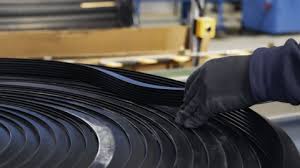Vulcanizing Agents of Rubber

Vulcanization is a chemical process that is used to improve the properties of both natural and synthetic rubber. Sulfur is the most common vulcanizing agent in rubber. When rubber is heated in the presence of sulfur, accelerator, and activator at 140–160°C, the formation of crosslinks long rubber molecules are formed. At the end of vulcanization, we achieve the rubber with improved elasticity, resilience, tensile strength, viscosity, hardness, and weather resistance. Often a catalyst and initiator is added to accelerate the vulcanization process. These cross-linked elastomers (vulcanized rubber have much better mechanical characteristics), made it possible to turn rubber into something that can help us in our daily life. Unvulcanized rubber has poor mechanical properties and is not very durable that's why using a vulcanizing agent in rubber is a must. OCCL India provides some of the best grade sulfur and insoluble sulfur that are the most important raw material for the tyre indus...












